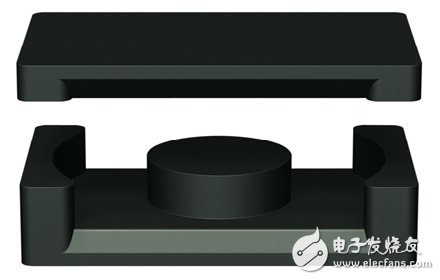
Privacy statement: Your privacy is very important to Us. Our company promises not to disclose your personal information to any external company with out your explicit permission.
The TDK Group has recently introduced a new EPCOS manganese-zinc (MnZn)-based PC200 ferrite magnetic material with high frequency and low loss characteristics. Developed specifically for power supplies and frequency converters with GaN-based fast switching power semiconductors, the magnetic field is optimized from 700kHz to 4MHz. The maximum transmission power is achieved when the switching frequency is 1.8 MHz to 2 MHz and the operating temperature is 100 °C. The maximum Curie temperature of the ferrite magnet is 250 °C.

PC200 ferrite magnets are especially suitable for magnetic rings or lithographic transformers. This new ferrite magnet provides ER, EFD, ELP, EQ, I and RM cores. Its excellent performance provides a very good solution for designing power supply miniaturization in the future. At the same time, due to the low loss characteristics of ferrite magnetic materials, the efficiency is also greatly improved, which is why the use of PC200 can significantly save energy.
main application
• Power transformers and converters (with GaN-based fast switching power semiconductors)
Main features and benefits
• Low power consumption from 700kHz to 4MHz; maximum transmission power at 1.8 to 2 MHz
Permanent Magnet Rotor,Anisotropic Ferrite Magnet Rotor,Anisotropic Cylinder Ferrite Magnets,Isotropic Ferrite Magnets
October 15, 2024
September 18, 2024
April 20, 2024
Gửi email cho nhà cung cấp này
October 15, 2024
September 18, 2024
April 20, 2024

Privacy statement: Your privacy is very important to Us. Our company promises not to disclose your personal information to any external company with out your explicit permission.

Fill in more information so that we can get in touch with you faster
Privacy statement: Your privacy is very important to Us. Our company promises not to disclose your personal information to any external company with out your explicit permission.